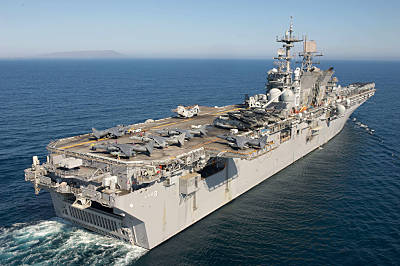FORT RILEY, Kan. — A mobile training team from Fort Benning, Ga., arrived at Fort Riley, June 7, to teach 15 Fort Riley Soldiers on how to fly one of the smallest unmanned aerial systems used by the U.S. Army — the RQ-11B Raven.
With two military instructors and two civilian contractors, the team took “Big Red One” Soldiers through a two-week operator class, followed by one week of master training.
“We’re here to train Raven operators and provide Fort Riley with a valuable asset in the war on terror,” said Staff Sgt. Jeremy Galusha, MTT instructor, 2nd Battalion 29th Infantry Regiment, 197th Infantry Brigade, U.S. Army Training and Doctrine Command.
Galusha and his team stayed at Douthit Range Complex’s barracks and used the Mock Airfield, which is equipped with a control tower, terminal and hangar; a 72-by-800-foot runway; an unmanned aerial systemm, or UAS, classroom; latrines and telephones.
But not all of the students will make it to the master training level, Galusha said.
“The challenge is to absorb the information that gets put out. There is a lot of information in a short period of time. It’s death by PowerPoint, but they have to know all of the emergency procedures in the air and be able to react. There’s so much that can go wrong,” he said.
The RQ-11B Raven is a hand-launched UAS powered by a lithium-ion battery.
Developed for the U.S. military, the Raven can fly for a duration of 60 to 90 minutes and travel anywhere from 30 to 60 miles per hour at an altitude of up to 500 feet above ground level, according to Gary Smith, range liaison, Douthit Range Complex, Directorate of Plans, Training, Mobilization and Security.
It’s rather small compared to the MQ1C Gray Eagles that belong to the Combat Aviation Brigade, known as the CAB; the Raven’s wingspan is 4.2 feet, and it weighs a little more than four pounds.
The payload consists of a high-resolution day and night camera and a thermal imager.
Pvt. Patrick Hernandez, 1st Battalion, 5th Field Artillery Regiment, 1st Heavy Brigade Combat Team, 1st Infantry Division, said he enjoyed the operator class and was trying to learn all of the safety measures.
“There are many factors that affect how the Raven flies. It’s a really cool (UAS) — definitely some high-tech equipment here,” he said.
Teams of instructors from Fort Benning’s official Raven school typically visit Fort Riley about five times a year, Smith said, but they aren’t the only visitors who take advantage of the Douthit Range Complex facilities and amenities.
Last March, members of the 1st Battalion, 52d Aviation Regiment, 16th Combat Aviation Brigade, from Fort Wainwright, Alaska, sought training and ratings on various pieces of aviation equipment at Fort Riley to gain knowledge to assist weather landing and recover capabilities at Army tactical airfields, Smith said.
The 2nd General Support Aviation Battalion, 1st Aviation Regiment, CAB, 1st Inf. Div. partnered with the visiting unit by rating its Soldiers as they trained for seven weeks on the Mock Airfield.
As recently as May, both Kansas State University — Salina and the University of Kansas’ aviation programs received support from the Douthit Range Complex when they flew the UAVs at the Mock Airfield.
State and local law enforcement, National Guard and Reserve units, ROTC units and others also have taken advantage of Fort Riley’s training capabilities in recent years, strengthening partnerships.
“The Mock Airfield is an outstanding training area,” Galusha said. “Fort Riley is one of the best that I’ve seen, Army wide, (and is) by far one of the easiest (installations) to work with. This area is real conducive to how we do training.”
Galusha has traveled to installations all over the world, including Germany and Hawaii. The best part of the job, he said, is seeing different installations and training Soldiers there how to take what they’ve learned back to their units and become leaders themselves.
Adding to the versatility and flexibility of the Mock Airfield is the external load training block training area, recently installed at the CAB’s request.
Equipped with six pads constructed with gravel and railroad ties, the external load training block training area allows the CAB to access weighted sling-load training blocks varying from 4,000 to 18,000 pounds, which they use for lifting calibration and sling-load training, according to Fred Siebe, manager, Digital Multi-Purpose Range Complex, Douthit Range Complex, Fort Riley Range Support, DPTMS. Additionally, the heavy training blocks are properly stored and accounted for any time the CAB wants to use them.
“The Mock Airfield is their favorite place for training because it saves time and resources,” he said. “The idea is to meet the needs of Soldiers with the best quality training we can offer.”
“We’re always looking for opportunities to improve training,” Smith added.
To learn more about Range Support and the Training Division, DPTMS, visit www.riley.army.mil/UnitPage.aspx?unit=DPTMS.Train.
Press release
U.S. Army

 von
von 


